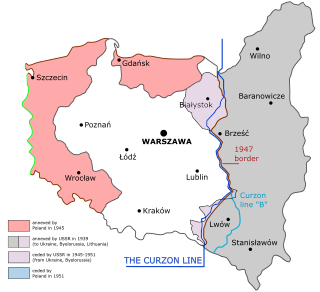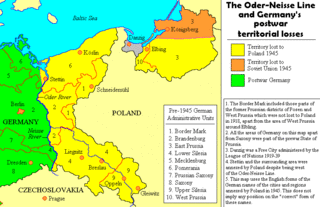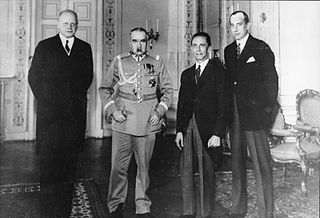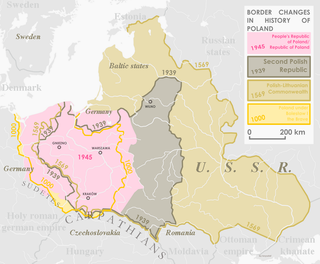
The War of the Polish Succession was a major European conflict sparked by a Polish civil war over the succession to Augustus II of Poland, which the other European powers widened in pursuit of their own national interests. France and Spain, the two Bourbon powers, attempted to test the power of the Austrian Habsburgs in Western Europe, as did the Kingdom of Prussia, whilst Saxony and Russia mobilized to support the eventual Polish victor. The fighting in Poland resulted in the accession of Augustus III, who in addition to Russia and Saxony, was politically supported by the Habsburgs.
Quadruple Alliance may refer to:

Frederick Augustus I was a member of the House of Wettin who reigned as the last Elector of Saxony from 1763 to 1806 and as King of Saxony from 1806 to 1827. He was also Duke of Warsaw from 1807 to 1815.

Augustus III was King of Poland and Grand Duke of Lithuania from 1733 until 1763, as well as Elector of Saxony in the Holy Roman Empire where he was known as Frederick Augustus II.

The Curzon Line was a proposed demarcation line between the Second Polish Republic and the Soviet Union, two new states emerging after World War I. It was first proposed by The 1st Earl Curzon of Kedleston, the British Foreign Secretary, to the Supreme War Council in 1919 as a diplomatic basis for a future border agreement.

The Duchy of Warsaw, also known as the Grand Duchy of Warsaw and Napoleonic Poland, was a French client state established by Napoleon Bonaparte in 1807, during the Napoleonic Wars. It comprised the ethnically Polish lands ceded to France by Prussia under the terms of the Treaties of Tilsit. It was the first attempt to re-establish Poland as a sovereign state after the 18th-century partitions and covered the central and southeastern parts of present-day Poland.

The Province of Silesia was a province of Prussia from 1815 to 1919. The Silesia region was part of the Prussian realm since 1740 and established as an official province in 1815, then became part of the German Empire in 1871. In 1919, as part of the Free State of Prussia within Weimar Germany, Silesia was divided into the provinces of Upper Silesia and Lower Silesia. Silesia was reunified briefly from 1 April 1938 to 27 January 1941 as a province of Nazi Germany before being divided back into Upper Silesia and Lower Silesia.

The Peace of Riga, also known as the Treaty of Riga, was signed in Riga on 18 March 1921, among Poland, Soviet Russia and Soviet Ukraine. The treaty ended the Polish–Soviet War.

The former eastern territories of Germany refer in present-day Germany to those territories east of the current eastern border of Germany i.e. Oder–Neisse line which historically had been considered German and which were annexed by Poland and the Soviet Union after World War II, these territories were also the lands where Germans used to be only or main ethnicity. So in contrast to the lands awarded to the restored Polish state by the Treaty of Versailles after World War I, the German territories lost with the Potsdam Agreement after World War II on 1 August 1945 were either almost exclusively inhabited by Germans before 1945, mixed German-Polish with a German majority, or mixed German-Czech with a German majority. The German population of the territories that had not fled in 1945 fled or was expelled to Germany forming the majority of the Germans expelled from Eastern Europe, with their possessions being expropriated. Despite acquiring territories from Germany, the Poles themselves were also expelled from the former eastern territories of Poland annexed by the Soviet Union.

The Kingdom of Poland, also known informally as the Regency Kingdom of Poland, was a short-lived polity and client state existing from 14 January 1917 to 11 November 1918; and proclaimed during World War I by the German Empire and Austria-Hungary on the territories of the former Russian-ruled Congress Poland, governed at the time by the Central Powers as the Government General of Warsaw.
The Franco-Polish Alliance was the military alliance between Poland and France that was active between the early 1920s and the outbreak of the Second World War. The initial agreements were signed in February 1921 and formally took effect in 1923. During the interwar period the alliance with Poland was one of the cornerstones of French foreign policy.
The Treaty of Warsaw was a treaty between the Federal Republic of Germany and the People's Republic of Poland. It was signed by Chancellor Willy Brandt and Prime Minister Józef Cyrankiewicz at the Presidential Palace on 7 December 1970, and it was ratified by the West German Bundestag on 17 May 1972.

The German–Polish declaration of non-aggression, also known as the German–Polish non-aggression pact, was a non-aggression agreement between Nazi Germany and the Second Polish Republic that was signed on 26 January 1934 in Berlin. Both countries pledged to resolve their problems by bilateral negotiations and to forgo armed conflict for a period of 10 years. The agreement effectively normalised relations between Poland and Germany, which had been strained by border disputes arising from the territorial settlement in the Treaty of Versailles. Germany effectively recognised Poland's borders and moved to end an economically-damaging customs war between the two countries that had taken place over the previous decade.

Poland is a country in Central Europe bordered by Germany to the west; the Czech Republic and Slovakia to the south; Ukraine, Belarus and Lithuania to the east; and the Baltic Sea and Kaliningrad Oblast, a Russian exclave, to the north. The total area of Poland is 312,679 square kilometres (120,726 sq mi), making it the 69th largest country in the world and the ninth largest in Europe.

The Treaty of Warsaw of April 1920 was a military-economical alliance between the Second Polish Republic, represented by Józef Piłsudski, and the Ukrainian People's Republic, represented by Symon Petliura, against Bolshevik Russia. The treaty was signed on 21 April 1920, with a military addendum on 24 April.
The German–Polish Border Treaty of 1990 finally settled the issue of the Polish–German border, which in terms of international law had been pending since 1945. It was signed by the foreign ministers of Poland and Germany, Krzysztof Skubiszewski and Hans-Dietrich Genscher, on 14 November 1990 in Warsaw, ratified by the Polish Sejm on 26 November 1991 and the German Bundestag on 16 December 1991, and entered into force with the exchange of the instruments of ratification on 16 January 1992.

The Treaty of the Three Black Eagles, or Treaty of Berlin, was a secret treaty signed in September and December 1732 between the Austrian Empire, the Russian Empire and Prussia.

British–Polish relations are the bilateral relations between the countries of United Kingdom and Poland. Exchanges between the two countries date back to medieval times, when Britain and Poland, then one of Europe's largest countries, were linked by trade and diplomacy. As a result of the 18th-century Partitions of the Polish–Lithuanian Commonwealth by its neighbours, the number of Polish immigrants to Britain increased in the aftermath of two 19th-century uprisings which forced much of Poland's social and political elite into exile. A number of Polish exiles fought in the Crimean War on the British side.

The Border Agreement between Poland and the USSR of 16 August 1945 established the borders between the Union of Soviet Socialist Republics (USSR) and the Republic of Poland. It was signed by the Provisional Government of National Unity formed by the Polish communists. According to the treaty, Poland officially accepted the ceding its pre-war Eastern territory to the USSR (Kresy) which was decided earlier in Yalta already. Some of the territory along the Curzon line, established by Stalin during the course of the war, was returned to Poland. The treaty also recognised the division of the former German East Prussia and ultimately approved the finalised delimitation line between the Soviet Union and Poland: from the Baltic sea, to the border tripoint with Czechoslovakia in the Carpathians. The agreement entered into force on 5 February 1946.
The Treaty of Warsaw was a diplomatic agreement signed in Warsaw on 8 January 1745. Its birthplace is traced back to Leipzig, Germany. It was an agreement between Great Britain, the Habsburg monarchy, the Dutch Republic and Saxony to uphold the pragmatic sanction enabling their favoured candidate Maria Theresa to take the throne of the Habsburg monarchy. It also helped the Austro-Saxon alliance secure "the pecuniary support of the maritime powers by the treaty of Warsaw".














